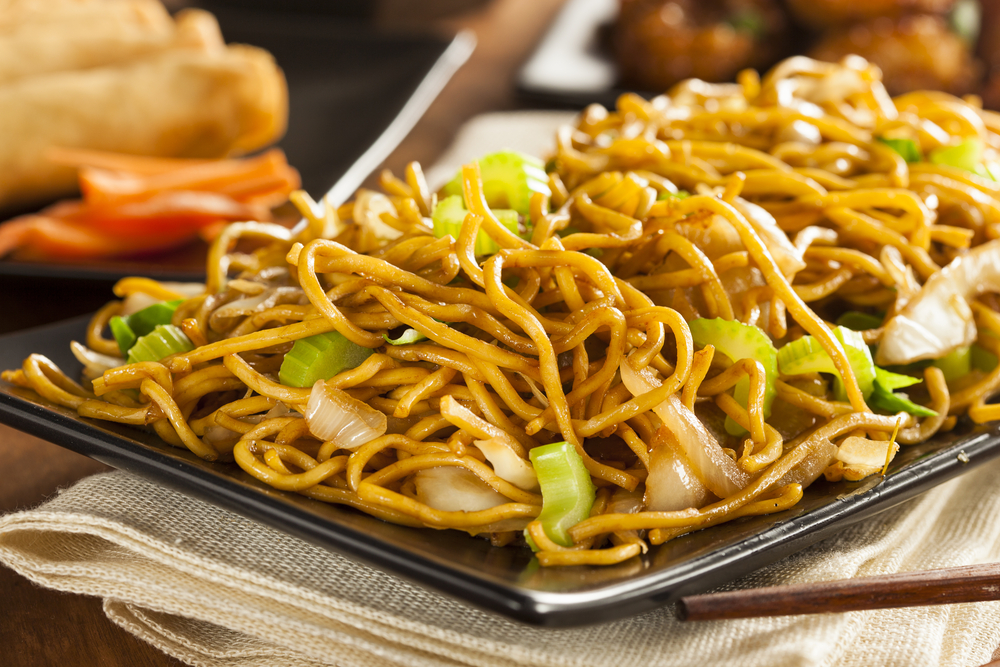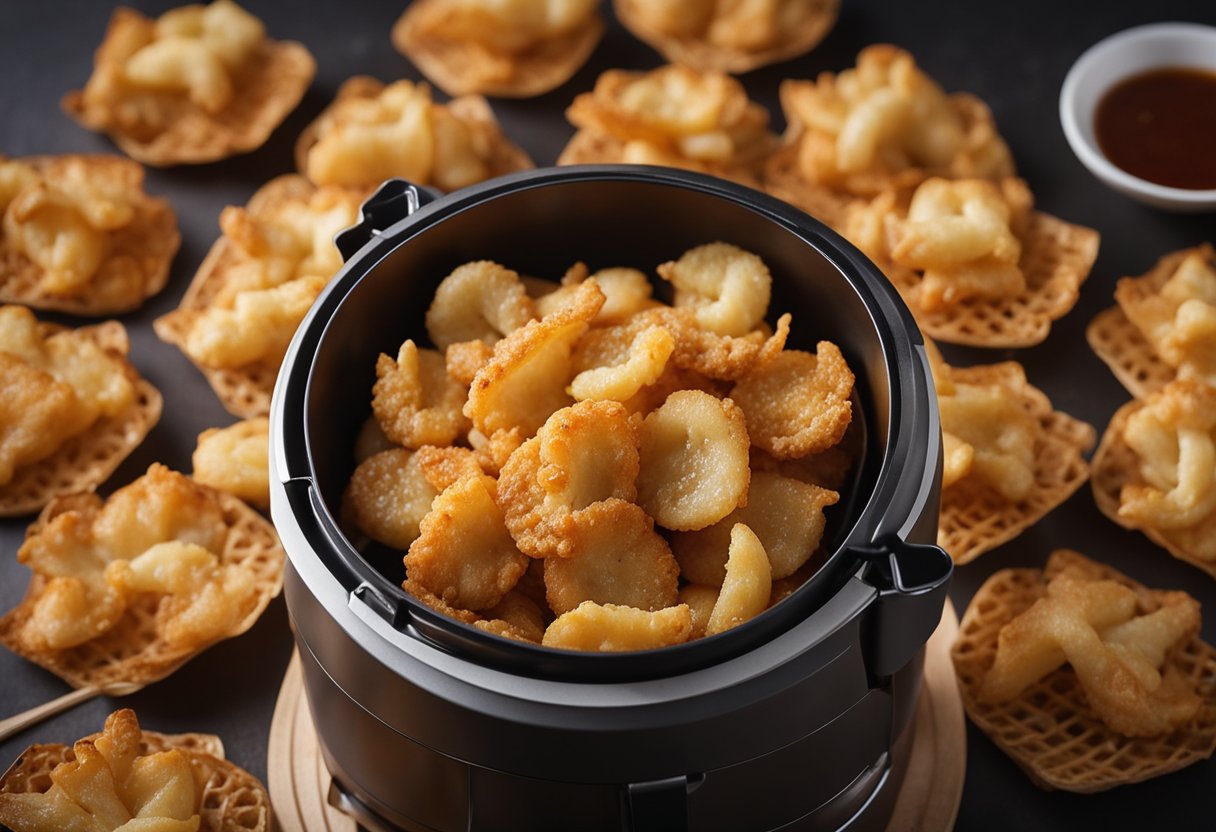I love Chinese food, and lo mein is one of my favorite dishes. However, ordering it in a restaurant can sometimes result in a large portion that I can’t finish in one sitting.
So, I often end up with leftover lo mein that I want to reheat for my next meal. But reheating lo mein can be tricky, and if not done correctly, it can result in a mushy and unappetizing mess.
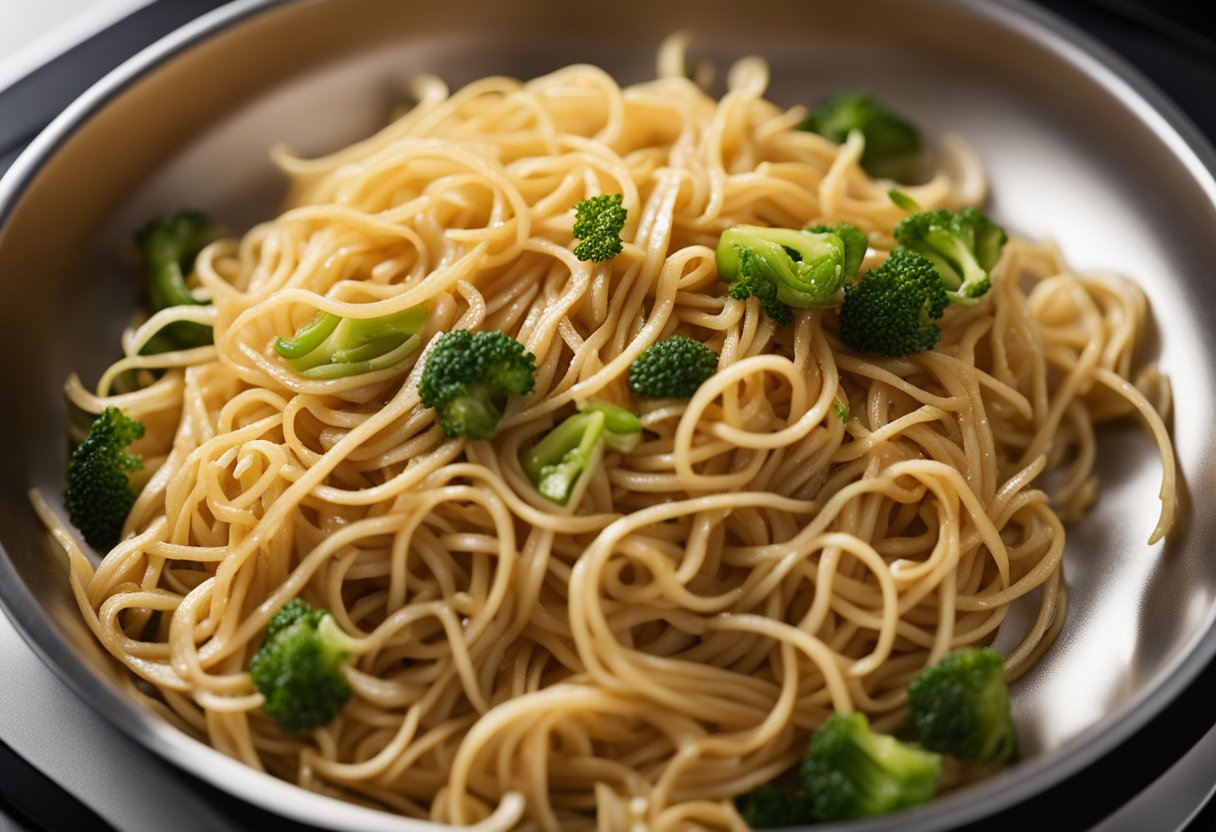
In this article, I will share some tips and tricks on how to reheat lo mein properly. I will explain the different methods you can use to reheat lo mein, including the microwave and stovetop methods.
I will also provide some additional tips to enhance the flavor and texture of reheated lo mein. By following these guidelines, you can enjoy delicious and perfectly reheated lo mein every time.
Key Takeaways
- Use a non-stick pan to reheat lo mein on the stovetop and add a splash of water or chicken broth to prevent the noodles from drying out.
- Avoid using the microwave to reheat lo mein if possible, as it can result in uneven heating and a rubbery texture.
- Enhance the flavor of reheated lo mein by adding some soy sauce, sesame oil, or chili flakes, and top it with some fresh herbs or scallions for added freshness.
Understanding Lo Mein and Its Components
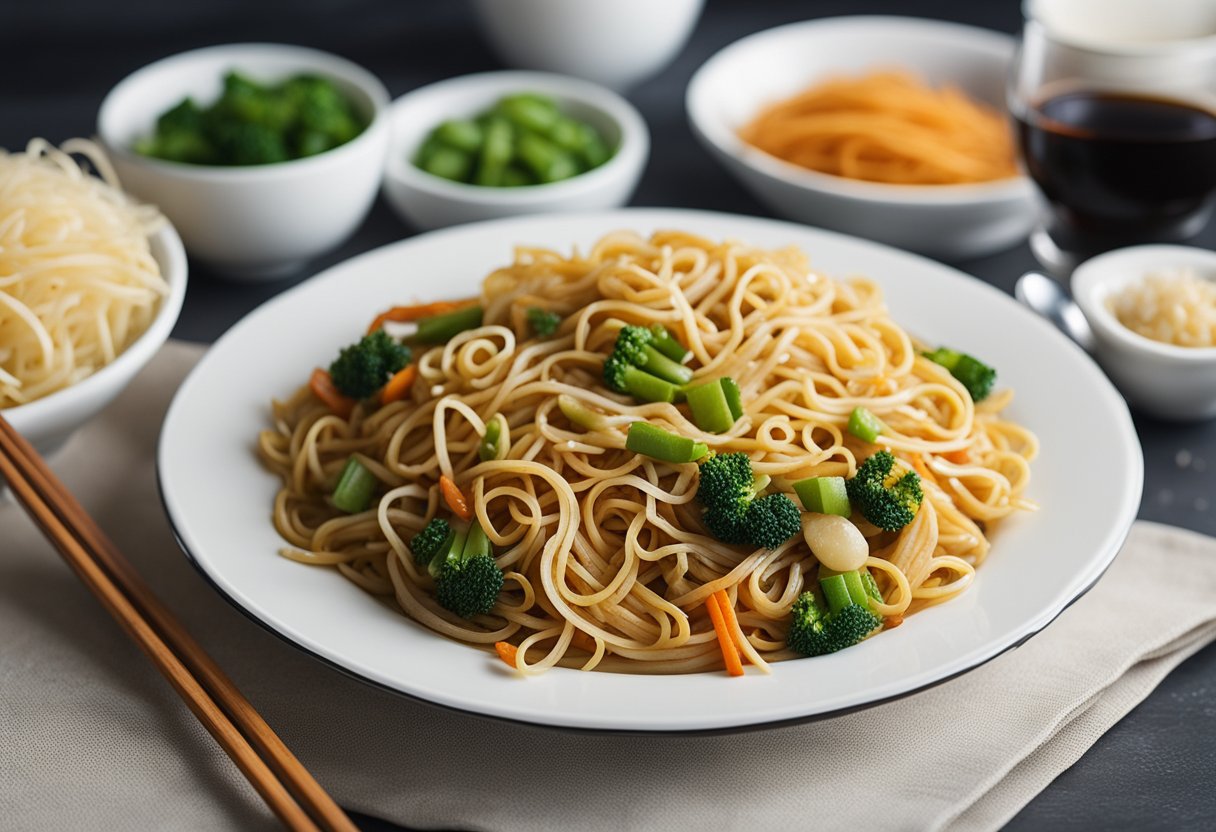
Lo mein is a popular Chinese dish made with wheat noodles that are stir-fried with vegetables, protein, and a savory sauce.
The dish is versatile, and you can customize it to your liking by adding different types of vegetables, meat, or tofu. Here is a breakdown of the key components of lo mein:
Noodles
Lo mein noodles are made from wheat flour and egg. They are thicker and chewier than other Chinese noodles, such as chow mein noodles or rice noodles. The noodles are cooked until they are al dente, then stir-fried with the other components of the dish.
Vegetables
Vegetables are an essential part of lo mein, and you can add any vegetables you like. Common vegetables used in lo mein include carrots, bell peppers, onions, mushrooms, and bok choy.
Adding vegetables not only makes the dish more nutritious but also adds texture and flavor.
Protein
Lo mein can be made with different types of protein, such as chicken, shrimp, beef, or tofu. The protein is cooked separately before being added to the noodles and vegetables.
Sauce
The sauce is what gives lo mein its signature flavor. The sauce is made with soy sauce, sesame oil, and other seasonings such as garlic, ginger, or chili flakes.
The sauce is added to the stir-fry towards the end of the cooking process and is evenly distributed throughout the dish.
Garnishes
Garnishes are optional but can add extra flavor and texture to the dish. Some common garnishes for lo mein include sesame seeds, cilantro, or green onions.
Understanding the components of lo mein is essential in making the perfect dish. Experiment with different combinations of protein and vegetables to find your favorite version of this classic Chinese dish.
Preserving Leftover Lo Mein
As someone who loves Chinese takeout, I often find myself with leftover lo mein. However, if you don’t store it properly, it can quickly go bad and become inedible.
Here are some tips on how to preserve your leftover lo mein:
- Store your leftover lo mein in an airtight container. This will help prevent bacteria from growing and keep the lo mein fresh for longer.
- If you’re planning on eating the leftover lo mein within a day or two, you can store it in the fridge. However, if you’re not going to eat it within that time frame, it’s best to freeze it.
- When freezing leftover lo mein, make sure to put it in a freezer-safe container or bag. Label the container with the date so you know how long it’s been in the freezer.
- When you’re ready to eat the frozen leftover lo mein, thaw it in the fridge overnight. Do not thaw it on the counter or in the microwave, as this can cause bacteria to grow.
- If you’re in a rush and need to thaw the leftover lo mein quickly, you can place it in a bowl of cold water. Change the water every 30 minutes until the lo mein is thawed.
By following these tips, you can store your leftover lo mein safely and ensure that it maintains its quality.
Reheating Lo Mein in the Microwave
When reheating lo mein in the microwave, there are a few things to keep in mind to ensure that your noodles are evenly heated and not dried out.
Here are the steps I follow:
- Transfer your lo mein to a microwave-safe dish or bowl. Make sure it is the right size to avoid overcrowding, which can lead to uneven heating.
- Sprinkle some water on your noodles. This will help add moisture and prevent the noodles from drying out during the reheating process. You can also cover the dish with a microwave-safe cover, paper towel, or plastic wrap to help trap in moisture.
- Microwave your lo mein on high for 1-2 minutes, depending on the amount of noodles you are reheating. Stop the microwave every 30 seconds to stir the noodles and ensure even heating.
- Check the temperature of your noodles before eating to make sure they are fully heated through. If they are still cold in the center, microwave for an additional 30 seconds.
It’s important to note that the microwave method may not produce the same results as other methods, such as reheating in a wok or frying pan. However, it is a quick and easy way to reheat your lo mein when time is of the essence.
Stovetop Reheating Method
When reheating lo mein on the stovetop, I recommend using a wok or frying pan. Here’s how I do it:
- Place the wok or frying pan on the stove and add one tablespoon of oil. Preheat to medium heat.
- Add the lo mein to the pan and toss frequently for 3-4 minutes until thoroughly reheated.
- Pro tip: add a little soy sauce or water if it seems too dry. Use your discretion when adding the oil.
It’s important to avoid using high heat when reheating lo mein on the stovetop. High heat can cause the noodles to dry out and become tough. Tossing the noodles frequently while reheating will help distribute the heat evenly and prevent sticking.
Stir-frying is also a good option for reheating lo mein on the stovetop. Simply heat your wok or frying pan over medium heat, add a tablespoon of oil, and stir-fry the lo mein for 2-3 minutes until heated through.
Overall, the stovetop method is a quick and easy way to reheat leftover lo mein. Just be sure to use a wok or frying pan and avoid using high heat.
Avoiding Common Reheating Mistakes
When reheating lo mein, it’s important to avoid some common mistakes to ensure that the dish retains its texture and flavor.
Here are some tips that I follow when reheating my leftover lo mein:
- Don’t overcrowd the pan. Overcrowding the pan can lead to steaming instead of reheating, which can result in mushy noodles. Make sure to use a non-stick pan that is large enough to accommodate your lo mein without crowding.
- Set the stove to medium heat. Setting the stove to too high a temperature can dry out the noodles, while setting it too low can result in soggy noodles. It’s best to set the stove to medium heat to ensure that the noodles are reheated consistently.
- Add a dash of oil. Adding a small amount of oil to the pan can help prevent the noodles from sticking together and clumping. It can also help to add some moisture to the dish, which can prevent the noodles from becoming too dry.
- Avoid overcooking the noodles. Overcooking the noodles can result in a mushy texture, so it’s important to keep an eye on the noodles while reheating them. It’s best to remove them from the heat as soon as they are heated through.
- Consider the reheating method. There are several methods for reheating lo mein, including on the stove, in the oven, or in the microwave. Each method has its pros and cons, so it’s important to choose the method that works best for you.
By following these tips, you can ensure that your reheated lo mein retains its texture and flavor.
Additional Tips for Enhancing Reheated Lo Mein
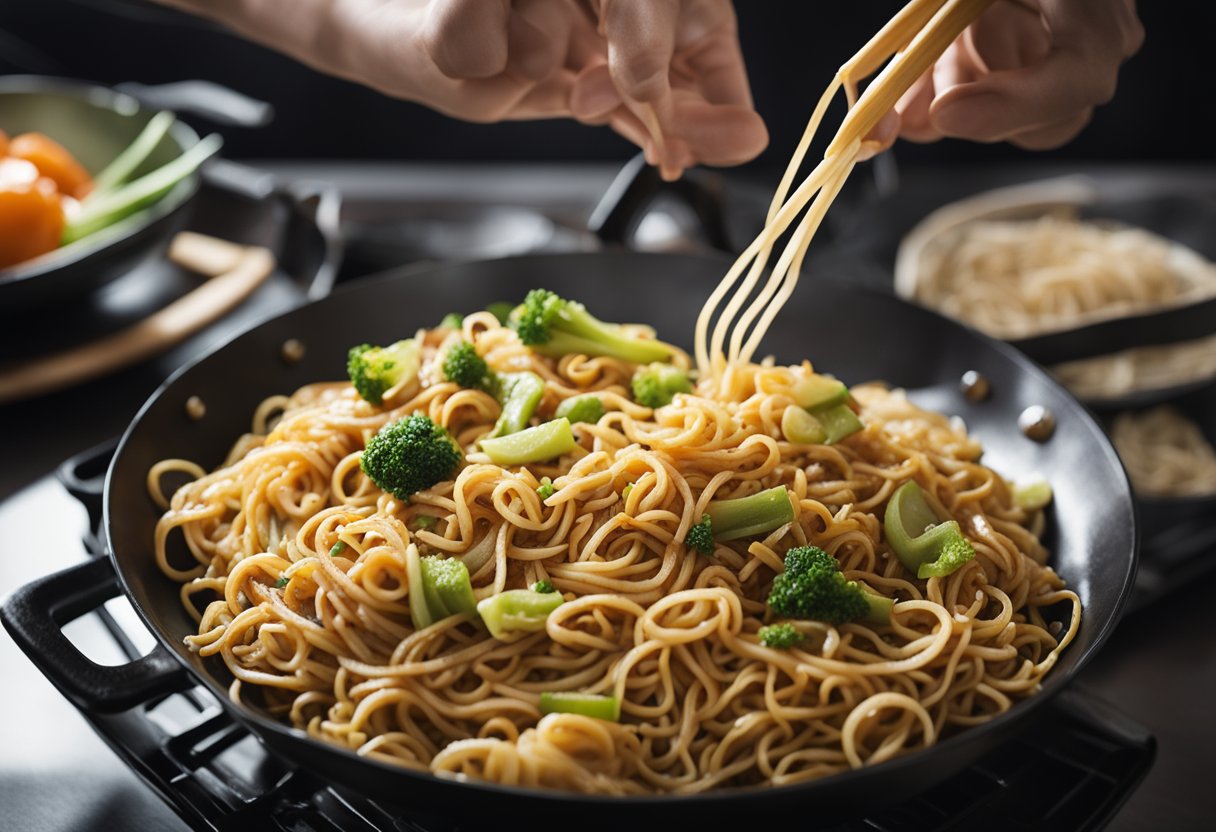
When reheating lo mein, there are a few additional tips you can follow to enhance its flavor and texture.
Add Liquid
Adding a small amount of liquid, such as broth or water, can help prevent the noodles from drying out and make them more tender.
When reheating in the microwave, sprinkle a little bit of water over the noodles before covering them with a lid or microwave-safe wrap. When reheating on the stovetop, add a tablespoon of broth or water to the pan and cover it with a lid.
Use a Lid
Covering the lo mein with a lid or microwave-safe wrap can help trap moisture and heat, making the noodles more evenly heated and preventing them from drying out. When reheating on the stovetop, use a lid to cover the pan and trap the steam.
Thicken with Cornstarch
If your reheated lo mein is too watery, you can thicken the sauce with a slurry made from cornstarch and water. Mix equal parts cornstarch and cold water until smooth, then stir the slurry into the saucepan and cook until the sauce thickens.
Add Meats and Vegetables
To add more flavor and texture to your reheated lo mein, consider adding cooked meats and vegetables.
Simply stir-fry the meats and vegetables in a non-stick skillet with a little vegetable oil until they are heated through, then add them to the reheated lo mein.
Use the Oven Method
If you have leftover homemade lo mein, using the oven method can help ensure that it is sufficiently heated through.
Preheat your oven to 350°F (180°C), spread the lo mein out in a baking dish, and cover it with foil. Bake the lo mein for 10-15 minutes or until heated through.
These quick and easy tips can help you reheat your lo mein noodles to perfection. Whether you are using the microwave, stovetop, or oven method, following these tips can help ensure that your reheated lo mein is just as delicious as the day it was made.
Frequently Asked Questions
What are the best methods to reheat lo mein?
The best methods to reheat lo mein are stovetop, microwave, oven, and air fryer. Each method has its own advantages and disadvantages. The stovetop method is great for retaining the texture and flavor of the noodles.
The microwave method is quick and easy, but the noodles may dry out. The oven method is good for reheating large batches of lo mein, but the noodles may become chewy. The air fryer method is great for achieving a crispy texture, but it may take longer to reheat.
How can I make leftover lo mein taste better?
To make leftover lo mein taste better, you can add a touch of soy sauce, white pepper, or sesame oil. These ingredients will reinforce the dulled flavors of your lo mein and add a savory taste.
You can also add some fresh vegetables or protein to the dish to make it more filling and nutritious.
Can you freeze lo mein and reheat it later?
Yes, you can freeze lo mein and reheat it later. To freeze lo mein, let it cool down to room temperature and then transfer it to an airtight container or freezer bag.
Label the container with the date and freeze it for up to three months. To reheat frozen lo mein, let it thaw overnight in the refrigerator and then reheat it using one of the methods described above.
What is the recommended way to reheat Chinese takeaway?
The recommended way to reheat Chinese takeaway is to use the stovetop or microwave method. These methods will help retain the texture and flavor of the food. Avoid using the oven method, as it can dry out the food and make it chewy.
How long should I reheat Chinese chow mein for?
The length of time you should reheat Chinese chow mein depends on the method you are using. If you are using the microwave method, reheat it in 30-second intervals, stirring the noodles in each break until it reaches the desired temperature.
If you are using the stovetop method, reheat it for 2-3 minutes, stirring occasionally.
What is the best way to reheat noodles in the microwave?
The best way to reheat noodles in the microwave is to place them in a microwave-safe dish, add a splash of water or chicken broth to the dish to prevent the noodles from drying out, cover the dish, and microwave the noodles in 30-second intervals, stirring the noodles in each break until they reach the desired temperature.



